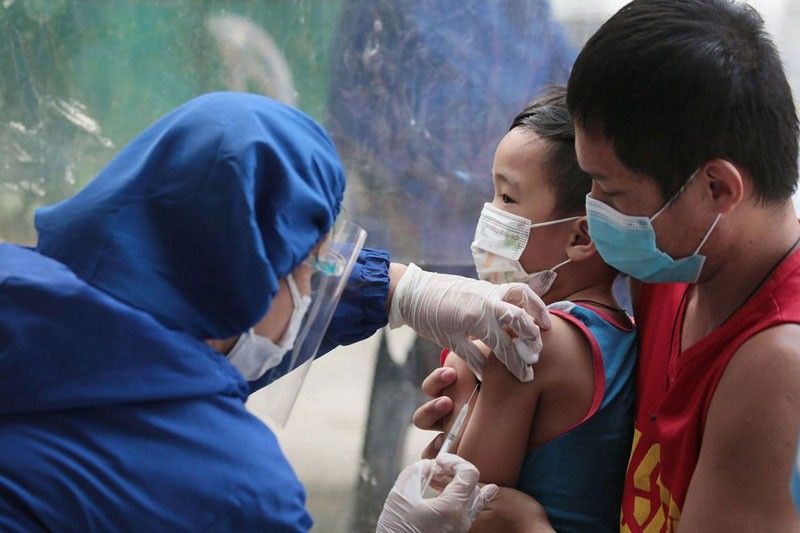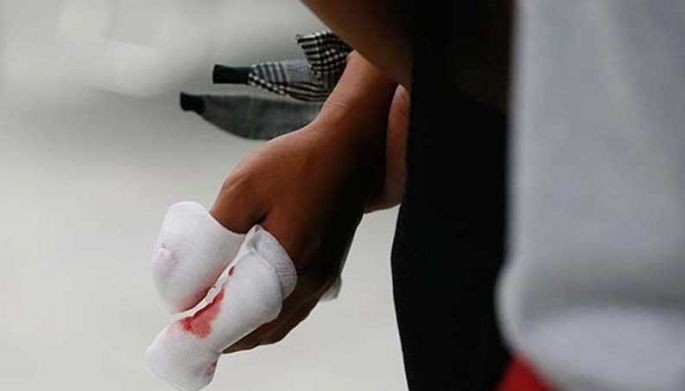95 Percent routine child vax targeted vs polio, measles, rubella

MANILA, Philippines — The Department of Health (DOH) yesterday warned of a high possibility for outbreaks of vaccine-preventable diseases if the country’s 95-percent target for child routine immunization will not be reached.
Health Assistant Secretary Beverly Ho said the vaccination rate “should be high as much as possible” to prevent an occurrence of outbreaks.
“We can see that, in the past, we were able to accomplish our target at 70 to 80 percent, which is much better than when we were at 60 percent. So the higher we can get, that’s really the ideal,” Ho noted during the DOH “Chikiting Ligtas” campaign in San Juan City.
Under the campaign, she said the DOH targets to give measles and rubella vaccines to 9.5 million children immediately and the bivalent oral polio vaccine to 11.5 million children. At least two million of the 11.5 million are targeted to be given the vaccine next month.
“We are not kidding when we say that vaccine-preventable diseases can result in deaths. There were several deaths in 2019, that is 637 out of the 50,000 cases of measles recorded. In 2020, 37 deaths were recorded… In 2022, we had 600 measles cases wherein one death was recorded,” Ho said.
She stressed that the DOH “does not want a repeat of this. That is why what we are saying is – it is preventable as long as the child is vaccinated.”
Ho pointed out that health workers, under the DOH catch-up immunization campaign, would be going around so vaccination will become accessible even to those staying at home.
“Even in health centers in urban areas, the response is to allot a much longer time for vaccination,” she said.
She assured parents they need not worry about the initial effects of vaccination, explaining a child who suffers from fever or has the injection site swollen can be easily addressed – the fever by taking paracetamol and the swollen site with a warm compress.
“These things can happen after vaccination but there are more benefits to it so parents don’t have to worry,” Ho stressed.
DOH Undersecretary Eric Tayag noted that vaccine hesitancy in the country has declined.
“The DOH is continuously disseminating the right information so that parents who are still hesitating to have their children vaccinated will be informed of the importance of vaccines. Apart from this, we are also conducting a survey to better monitor and get to know the sentiments of our kababayans on why they don’t want their children to receive vaccines,” Tayag said.
Maria Rosario Vergeire, DOH officer-in-charge, said the Chikiting Ligtas campaign aims to target children 59 months old and below who have not received any routine immunization vaccine and those that have not completed their immunization schedule.
She noted that measles-rubella and polio are highly contagious diseases but are also easily preventable through immunization.
“These vaccines are safe, effective and being used by different countries to protect their young population. Through your concerted efforts, we can achieve 95 percent immunization coverage of our children and prevent epidemics from happening,” Vergeire said in her virtual message.
She added, “We are encouraging the parents, uncles, aunts, grandparents to have your children, nieces or nephews and grandchildren vaccinated. These vaccines are made available so that no child or family will suffer from the complications of vaccine-preventable diseases and the high cost that would come with hospitalization.”
For this campaign, the DOH is currently mobilizing the full weight of its financial and human resources, allocating funds for Centers for Health Development’s hiring of vaccinators, risk communications and advocacy activities and delivery of vaccines and other supplies. This support shall also extend to routine vaccinations until the end of the year.
As an aid to the campaign, the World Health Organization and United Nations Children’s Fund (UNICEF) are supporting the DOH by providing assistance in procuring vaccines, deploying additional health staff, engaging with communities to address hesitancy and misinformation and building cold chain capacities, among others.
The target for the National Capital Region, according to DOH-NCR Director Aleli Sudiacal, is to administer the measles-rubella vaccine to one million children and the oral polio vaccine to 1.1 million children.
Calabarzon ranked number one among regions in the country with zero-dose children, said Dr. Carla Orozco, a UNICEF Philippines immunization specialist.
Zero-dose children are those that have not received a single dose of vaccine by the time they turn one year old. They usually lack the first dose of DPT (diphtheria, tetanus, pertussis).
In the Philippines, penta one (Pentavalent 1 vaccine), which is one of the most basic childhood vaccines, provides protection to a child from five life-threatening diseases – Diphtheria, Pertussis, Tetanus, Hepatitis B and Hib (used to prevent Haemophilus influenza type b infection).
- Latest
- Trending































